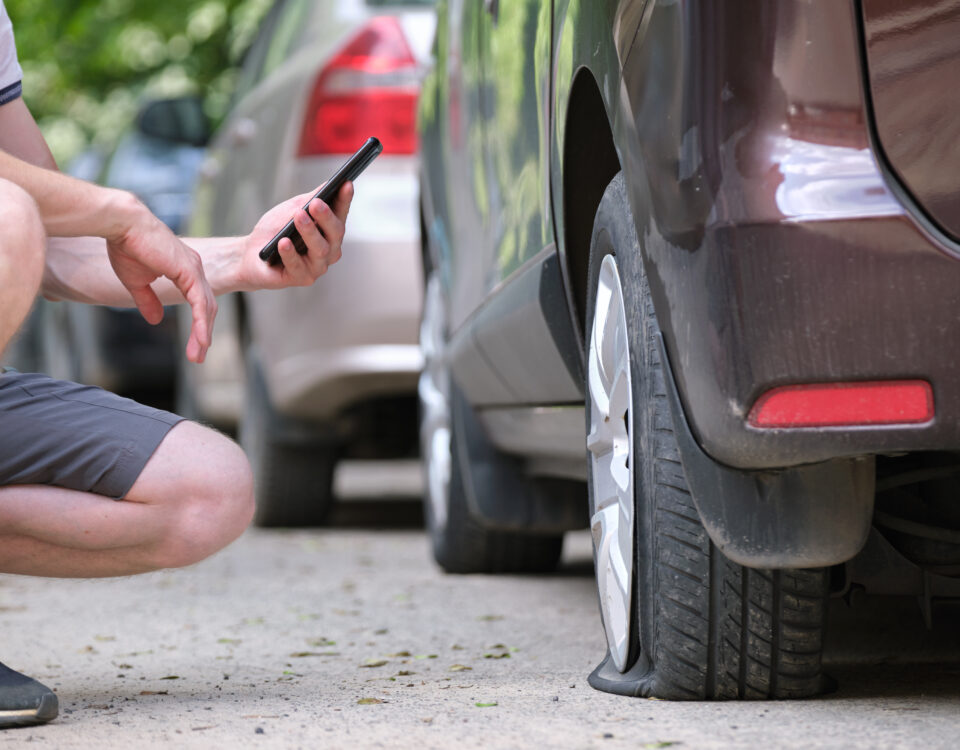Common Traffic Laws Every Driver Should Know
January 2, 2019How to Change a Tire
January 15, 2019Studies show that about 76,000 people are injured each year due to winter-related car crashes. Many of those crashes happen on either snowy or icy roads or during a snowfall, when visibility is low. Staying out of the weather is not always an option for some, which is why tips for driving cautious can help you be a safer driver. Although some accidents simply happen, you can reduce your risk of being in one with some safe winter driving recommendations!
Driving Safe on Winter Roads
Wintertime often means snow, icy roads and a higher risk for car accidents. Many accidents in the winter have to do with weather conditions and drivers not exercising enough caution. You could even be the safest driver and still be in an accident due to snow, ice or low visibility. Knowing that winter brings worse road conditions can help you in preparing for what those weather conditions will be.
Studies show that around 4,000 Americans have died due to winter-related car accidents in the last 5 years. USA Today reports that the states with the highest winter driving deaths are Michigan, Wisconsin, Ohio, New York, Pennsylvania, and Indiana. Around 117,000 people are injured on average each year due to snowy road conditions. The amount of deaths and accidents were significantly reduced once salt was introduced to snowy roads, highways and freeways. Salt helps to melt the ice and snow anywhere it is applied. Safe Winter Roads reported that the introduction of salting roads actually reduced accidents by 88% compared to plowing roads alone.
Winterizing Your Car
There are several ways you can help make your car safer for winter. Preparing your car for winter is part of driving safe on winter roads. Winterizing your car is smart, especially if you drive often in the winter or you live in areas where snow is very heavy. Some tips you want to follow for winterizing your car and driving safe on winter roads include:
- Refill your wiper fluid. Salted roads often kick up salt on the windshield, making visibility low. Make sure you get freeze-resistant wiper fluid and that you fill it full in your car.
- Replace all other fluids. Antifreeze will help your radiator to stay intact instead of having liquid freeze inside it. Make sure you have enough oil in your car for driving and that all your oils are freeze-resistant.
- Consider investing in snow tires. If you live in a snowy or icy area, snow tires can help you maintain traction on the road. The treads are deeper and the grooves help move snow outward so you don’t skid. Always change all 4 tires to snow tires so they work the same. If you live in very heavy snow areas, you may need to keep snow chains in your trunk to go in areas with inclines or that don’t get plowed.
- Check your car battery. The cold weather can drain battery power faster. If your car makes a sputtering noise already, definitely have the battery checked.
- Make sure you pack an emergency kit. Many drivers get stranded due to weather conditions or accidents. Have an emergency pack with food, water, warm clothes, heat sources and anything else you might need.
Decide When to Drive
Do you know if it’s safe to drive? Many people don’t check the weather before venturing out, as they already know they have to go to work or school regardless of the weather. It’s always smart to check the news and the weather reports for winter conditions. With bad weather conditions, roads are often closed for safety reasons. Schools, businesses, and other buildings may be closed due to blizzards or conditions that have already led to car accidents. Checking on weather conditions and reports can help you know where to drive and when. Being knowledgeable about these things can even help you avoid an accident yourself.
If you want to drive safe in the winter, try to choose times to drive when most people aren’t out on the roads. You may be a safe driver, but others may not be. There are always those drivers who go faster than the speed limit regardless of weather conditions outside. Choose a time to drive when there will be fewer people on the roads. If possible, choose routes that take you away from areas that are congested or that haven’t been plowed or salted. Plan routes the night before you leave so you have your plan set before you start a busy morning. Knowing alternate routes in case of a road closure or accident can help you still be to your work, school or obligation on time.
Driving a Safe Car
If you’re car is not safe to drive during normal weather conditions, then it’s not going to hold up when driving on winter roads. Any car that hasn’t had inspection and maintenance checks could be unsafe on the road. It’s why many states require these checks yearly. Some will require documentation that your car is safe to drive every 1-2 years. If driving safe on winter roads or in any type of weather is important to you, make sure you have your car maintenance done about every 7,500 miles. Aim for 1-2 times a year if you drive a lot. This is a time when we can check all the major car parts under the hood and on the exterior.
Driving safe on winter roads can be made easier when your car battery, brakes, window wipers and other parts are working correctly. You never want the heater to go out or your car alignment to be off. There are many things that can do wrong when driving on winter roads, and you don’t want the problem to be a lack of planning. To schedule your maintenance check today, call Scott’s Fort Collins Auto at (970) 682-4202!






